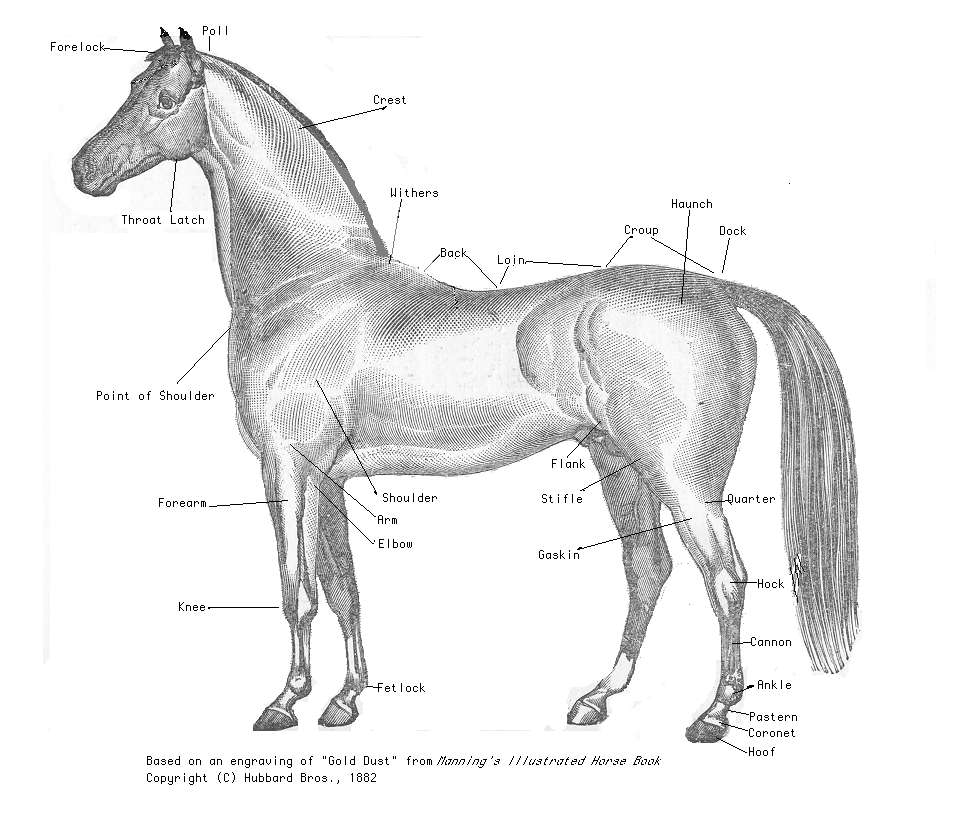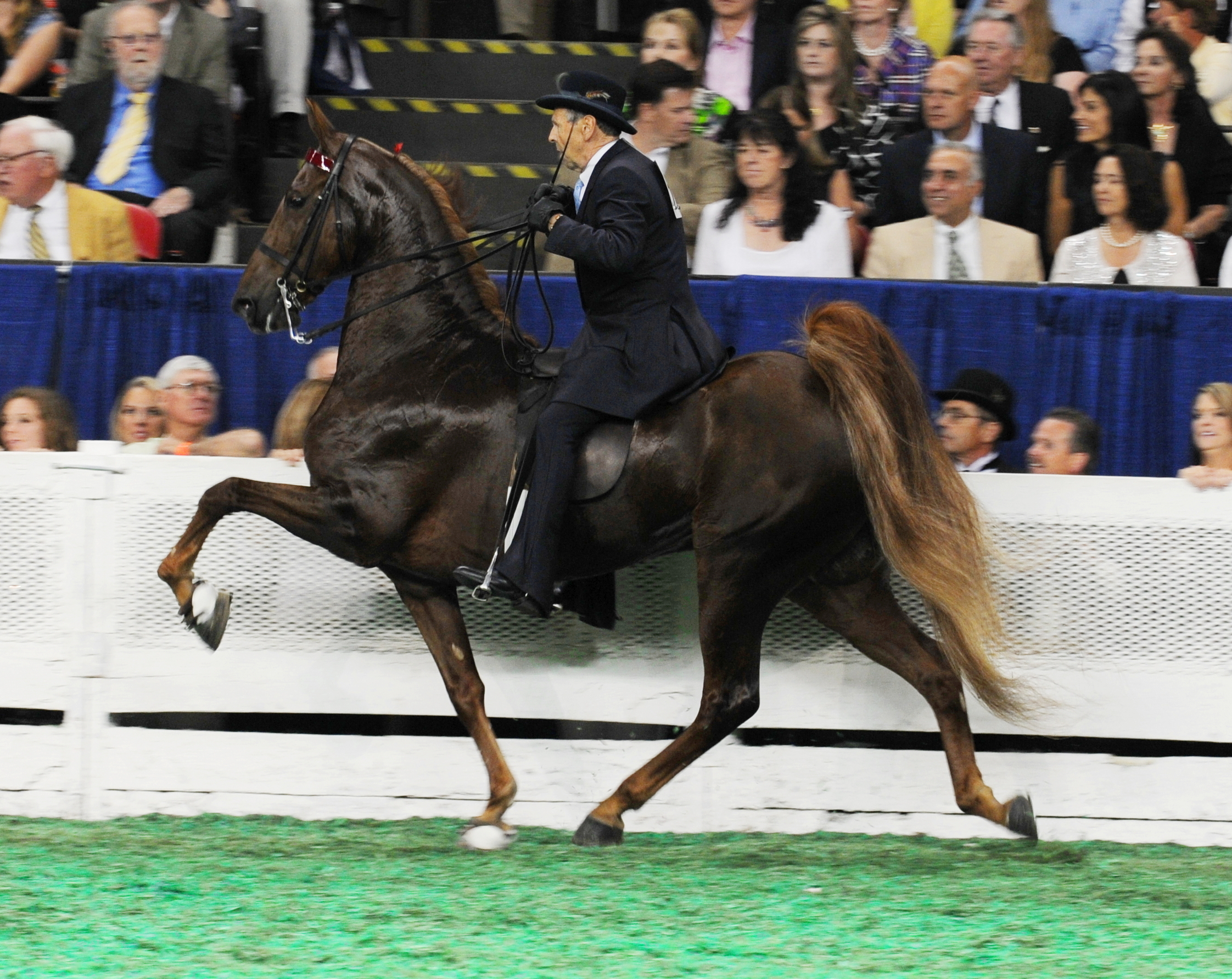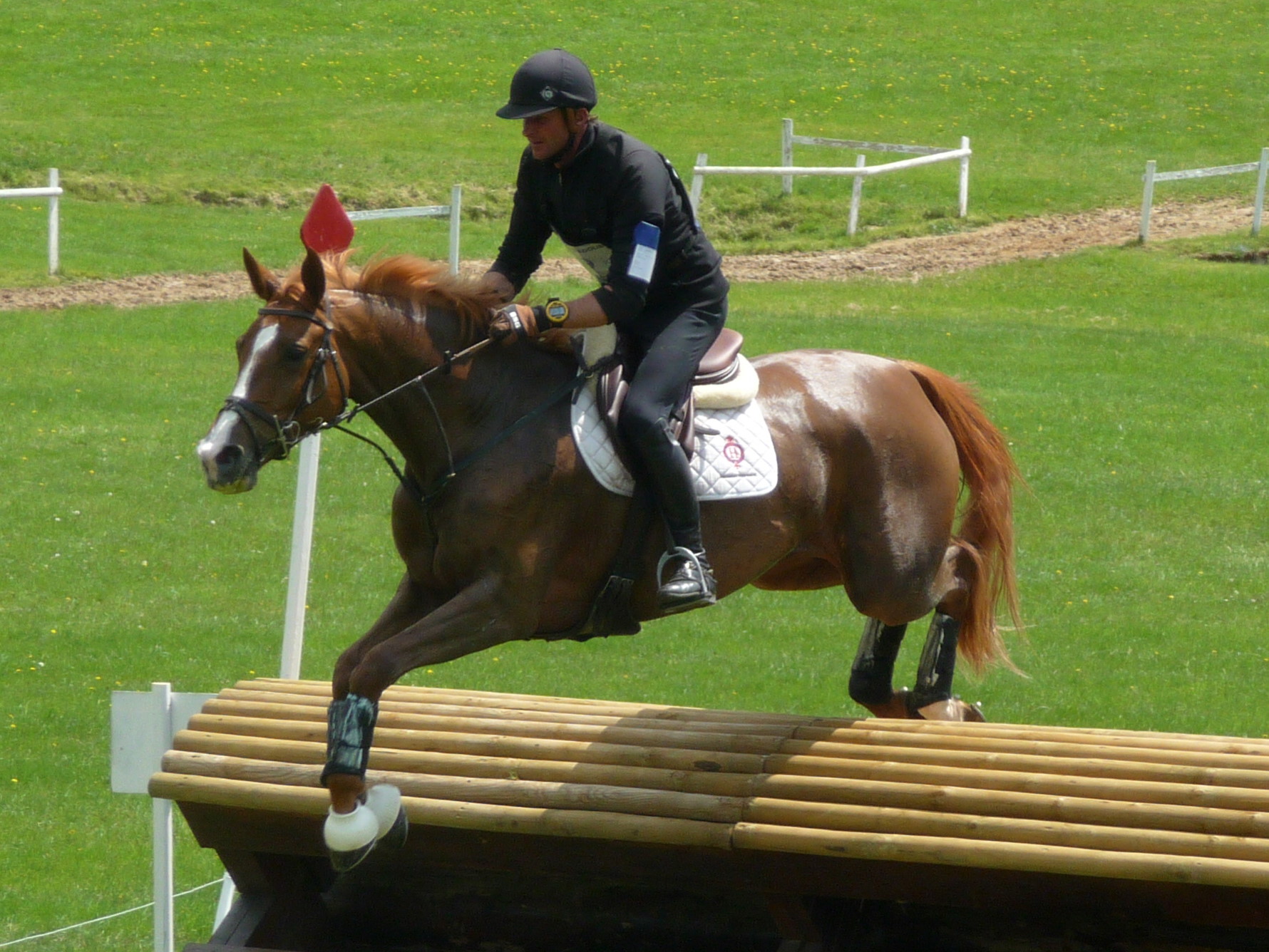|
Mangalarga Marchador
The Mangalarga Marchador is a Brazilian breed of riding horse. It is the national horse breed of Brazil, where there are more than half a million of them; it is among the most numerous breeds of riding horse in the world. It derives from cross-breeding of Portuguese Alter Real horses with local Criollo stock. It displays four gaits: the walk, the canter, and two ambling gaits, the ''marcha batida'' and the ''marcha picada''; it does not trot. History Origin Francisco Gabriel Junqueira, Baron of Alfenas, began breeding his imported Lusitano to the mares on his farm (primarily Barbs, along with other breeds brought to Brazil when it was colonized). The result was a smooth-gaited, attractive horse which the baron called ''Sublime''. Junqueira sold some of the ''Sublimes'' to a friend who had a farm in Paty do Alferes, Rio de Janeiro. The farm's name was ''Mangalarga'', and the owner rode ''Sublimes'' to and from Rio de Janeiro. In Rio, people noticed the smooth-gaited, attr ... [...More Info...] [...Related Items...] OR: [Wikipedia] [Google] [Baidu] |
Brazil
Brazil ( pt, Brasil; ), officially the Federative Republic of Brazil (Portuguese: ), is the largest country in both South America and Latin America. At and with over 217 million people, Brazil is the world's fifth-largest country by area and the seventh most populous. Its capital is Brasília, and its most populous city is São Paulo. The federation is composed of the union of the 26 States of Brazil, states and the Federal District (Brazil), Federal District. It is the largest country to have Portuguese language, Portuguese as an List of territorial entities where Portuguese is an official language, official language and the only one in the Americas; one of the most Multiculturalism, multicultural and ethnically diverse nations, due to over a century of mass Immigration to Brazil, immigration from around the world; and the most populous Catholic Church by country, Roman Catholic-majority country. Bounded by the Atlantic Ocean on the east, Brazil has a Coastline of Brazi ... [...More Info...] [...Related Items...] OR: [Wikipedia] [Google] [Baidu] |
Junqueira Family
Junqueira may refer to: People: *Bruno Junqueira (born 1976), Brazilian race car driver *Diego Junqueira (born 1980), professional Argentinian tennis player * João Junqueira (born 1965), retired Portuguese runner *Junqueira Freire Luís José Junqueira Freire (December 31, 1832 – June 24, 1855) was a Brazilian poet and Benedictine monk, adept of the "Ultra-Romanticism" movement and author of ''Inspirações do Claustro''. He is the patron of the 25th chair of the Brazili ... (1832–1855), Brazilian poet and Benedictine monk * Durval Junqueira Machado, Brazilian footballer * Paulo Alfeu Junqueira Duarte (1899–1984), Brazilian archaeologist and humanist Other: * ARCD Junqueira, amateur futsal team based in Santa Cruz do Bispo, Portugal * Junqueira (Póvoa de Varzim), shopping street in downtown Póvoa de Varzim in Portugal * Junqueira cow, cattle breed from Brazil {{disambiguation, surname ... [...More Info...] [...Related Items...] OR: [Wikipedia] [Google] [Baidu] |
Breed Association
Breed clubs are associations or clubs with activities centered on a single, specific breed of a particular species of domesticated animal. The purpose of the association will vary with the species of animal and the goals and needs of the members of the association. Breed associations or clubs may vary in their goals, activities and nomenclature from country to country, even for the same breed. Most domesticated animals, whether they are agricultural animals such as cattle, llamas, poultry, sheep and pigs, or companion animals such as pigeons, horses, cats and dogs, have breed clubs associated with the breed. Purpose In general, breed clubs and associations create a written definition of the breed (called a breed standard) for the breed with which the organization is associated. Breed clubs also maintain important records, and provide members with information. Many breed associations also have a social component, organising various activities such as shows. In addition, they may r ... [...More Info...] [...Related Items...] OR: [Wikipedia] [Google] [Baidu] |
Caxambu
Caxambu is a Brazilian municipality in Minas Gerais. Its population in 2021 was estimated at 21,566. Caxambu is renowned for its spa which has twelve sources of mineral sparkling water flowing 24 hours a day and a cold-water geyser Cold-water geysers have eruptions similar to those of hot-water geysers, except that -bubbles drive the eruption instead of steam from the proximity to magma. In cold-water geysers, -laden water lies in a confined aquifer, in which water and are .... Image:Caxambu 02198.JPG , Mineral waters References External links * Municipalities in Minas Gerais {{MinasGerais-geo-stub ... [...More Info...] [...Related Items...] OR: [Wikipedia] [Google] [Baidu] |
Juscelino Kubitschek De Oliveira
Juscelino Kubitschek de Oliveira (; 12 September 1902 – 22 August 1976), also known by his initials JK, was a prominent Brazilian politician who served as the 21st president of Brazil from 1956 to 1961. His term was marked by economic prosperity and political stability, being most known for the construction of a new capital, Brasília. Early life and career Kubitschek was born into a poor family in Diamantina, Minas Gerais. His father, João César de Oliveira (1872–1905), who died when Juscelino was two years old, was a traveling salesman. He was raised by his mother, a schoolteacher named Júlia Kubitschek (1873–1973). His mother was of part Czech and Roma descent. He was educated at a seminary school in Diamantina, where he was an average student. Kubitschek attended the Federal University of Minas Gerais in Belo Horizonte when he turned twenty. He became a licensed medical doctor after seven years of schooling. He then went to live in Europe for a few months after ... [...More Info...] [...Related Items...] OR: [Wikipedia] [Google] [Baidu] |
Equine Conformation
Equine conformation evaluates a horse's bone structure, musculature, and its body proportions in relation to each other. Undesirable conformation can limit the ability to perform a specific task. Although there are several faults with universal disadvantages, a horse's conformation is usually judged by what its intended use may be. Thus "form to function" is one of the first set of traits considered in judging conformation. A horse with poor form for a Grand Prix show jumper could have excellent conformation for a World Champion cutting horse, or to be a champion draft horse. Every horse has good and bad points of its conformation and many horses (including Olympic caliber horses) excel even with conformation faults. Conformation of the head and neck The standard of the ideal head varies dramatically from breed to breed based on a mixture of the role the horse is bred for and what breeders, owners and enthusiasts find appealing. Breed standards frequently cite large eyes, a br ... [...More Info...] [...Related Items...] OR: [Wikipedia] [Google] [Baidu] |
Mangalarga
The Mangalarga is a horse breed that was originally developed in Brazil by Francisco Gabriel Junqueira, the Baron of Alfenas, when he began breeding Alter Real stallions from Portugal with local Colonial Spanish mares on his lands in Baependi County at Minas Gerais Minas Gerais () is a state in Southeastern Brazil. It ranks as the second most populous, the third by gross domestic product (GDP), and the fourth largest by area in the country. The state's capital and largest city, Belo Horizonte (literally ... State. Thus work of Junqueira also developed the Mangalarga Marchador breed that differs from the Mangalarga due to the influence of different bloodlines and a focus on different traits. However, at the beginning, there was just one type of horse, the "Mangalarga Horse". However, today the two breeds are different from one another and each has its own studbook and breed associations. References Horse breeds Horse breeds originating in Brazil {{horse-b ... [...More Info...] [...Related Items...] OR: [Wikipedia] [Google] [Baidu] |
Closed Stud Book
A breed registry, also known as a herdbook, studbook or register, in animal husbandry and the hobby of animal fancy, is an official list of animals within a specific breed whose parents are known. Animals are usually registered by their breeders while they are young. The terms studbook and register are also used to refer to lists of male animals "standing at stud", that is, those animals actively breeding, as opposed to every known specimen of that breed. Such registries usually issue certificates for each recorded animal, called a pedigree, pedigreed animal documentation, or most commonly, an animal's "papers". Registration papers may consist of a simple certificate or a listing of ancestors in the animal's background, sometimes with a chart showing the lineage. Types of registries There are breed registries and breed clubs for several species of animal, such as dogs, horses, cows and cats. The US ''Association of Zoos and Aquariums'' (AZA) also maintains stud books for captive ... [...More Info...] [...Related Items...] OR: [Wikipedia] [Google] [Baidu] |
American Saddlebred
The American Saddlebred is a horse breed from the United States. This breed is referred to as the "Horse America Made". Descended from riding-type horses bred at the time of the American Revolution, the American Saddlebred includes the Narragansett Pacer, Canadian Pacer, Morgan and Thoroughbred among its ancestors. Developed into its modern type in Kentucky, it was once known as the "Kentucky Saddler", and used extensively as an officer's mount in the American Civil War. In 1891, a breed registry was formed in the United States. Throughout the 20th century, the breed's popularity continued to grow in the United States, and exports began to South Africa and Great Britain. Since the formation of the US registry, almost 250,000 American Saddlebreds have been registered, and can now be found around the world, with separate breed registries established in Great Britain, Australia, continental Europe, and southern Africa. Averaging in height, Saddlebreds are known for their sen ... [...More Info...] [...Related Items...] OR: [Wikipedia] [Google] [Baidu] |
Thoroughbred
The Thoroughbred is a horse breed best known for its use in horse racing. Although the word ''thoroughbred'' is sometimes used to refer to any breed of purebred horse, it technically refers only to the Thoroughbred breed. Thoroughbreds are considered " hot-blooded" horses that are known for their agility, speed, and spirit. The Thoroughbred, as it is known today, was developed in 17th- and 18th-century England, when native mares were crossbred with imported Oriental stallions of Arabian, Barb, and Turkoman breeding. All modern Thoroughbreds can trace their pedigrees to three stallions originally imported into England in the 17th and 18th centuries, and to a larger number of foundation mares of mostly English breeding. During the 18th and 19th centuries, the Thoroughbred breed spread throughout the world; they were imported into North America starting in 1730 and into Australia, Europe, Japan and South America during the 19th century. Millions of Thoroughbreds exist today, a ... [...More Info...] [...Related Items...] OR: [Wikipedia] [Google] [Baidu] |
Anglo-Arabian
The Anglo-Arabian or Anglo-Arab is a crossbred, part-Arabian horse that now also has its own status as a horse breed. It is the result of a Thoroughbred (hence, the prefix "Anglo") being crossed with an Arabian. The cross can be made between a Thoroughbred stallion and an Arabian mare, or vice versa. It can also be a cross between either an Anglo-Arab and a Thoroughbred or, alternatively, an Anglo-Arab and an Arabian. Another permitted cross is between two Anglo-Arabians. No matter the cross, a horse must have a minimum 12.5% of Arabian blood to be considered an Anglo-Arabian. France is one of the greatest producers of Anglo-Arabians. The French Anglo-Arab traces back to two stallions: the Arabian stud Massoud and Aslam, a "Turkish" horse, probably of the now-extinct Turkoman or "Turkmene" breed. These Syrian imports were then crossed with a trio of Thoroughbreds, specifically, the Comus Mare, the Selim Mare, and Daer. Some years later, three of their daughters — Clovi ... [...More Info...] [...Related Items...] OR: [Wikipedia] [Google] [Baidu] |
Arabian Horse
The Arabian or Arab horse ( ar, الحصان العربي , DIN 31635, DMG ''ḥiṣān ʿarabī'') is a horse breed, breed of horse that originated on the Arabian Peninsula. With a distinctive head shape and high tail carriage, the Arabian is one of the most easily recognizable horse breeds in the world. It is also one of the oldest breeds, with archaeological evidence of horses in the Middle East that resemble modern Arabians dating back 4,500 years. Throughout history, Arabian horses have spread around the world by both war and trade, used to improve other breeds by adding speed, refinement, endurance, and strong bone. Today, Arabian bloodlines are found in almost every modern breed of riding horse. The Arabian developed in a desert climate and was prized by the nomadic Bedouin people, often being brought inside the family tent for shelter and protection from theft. Selective breeding for traits, including an ability to form a cooperative relationship with humans, create ... [...More Info...] [...Related Items...] OR: [Wikipedia] [Google] [Baidu] |






